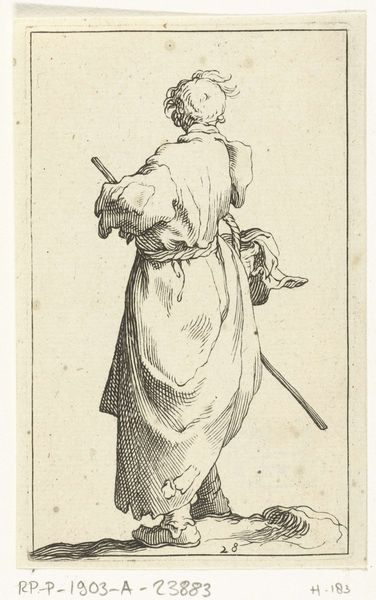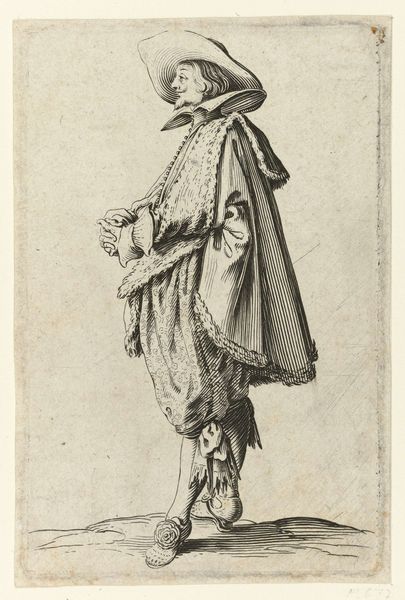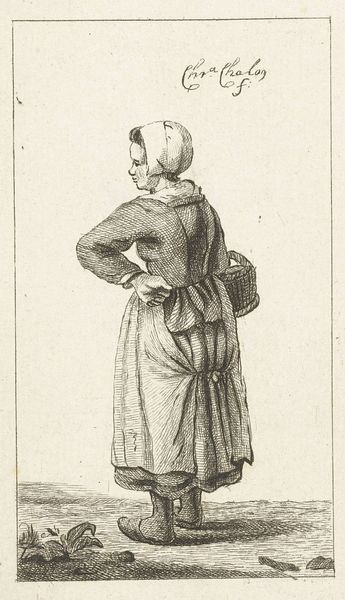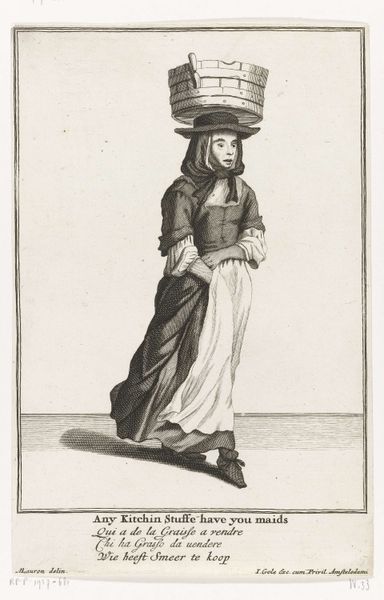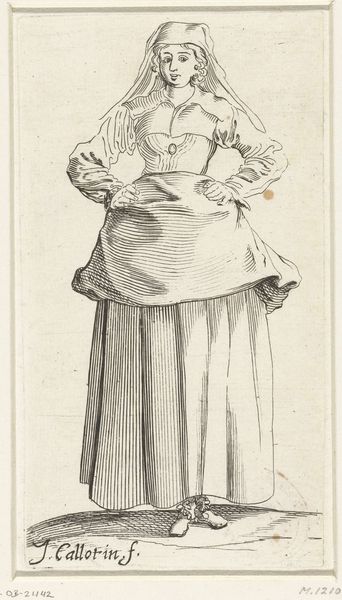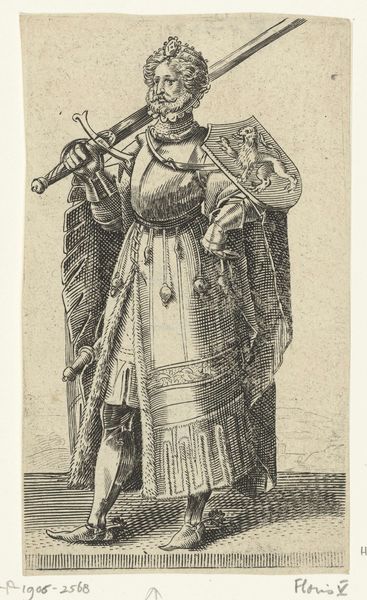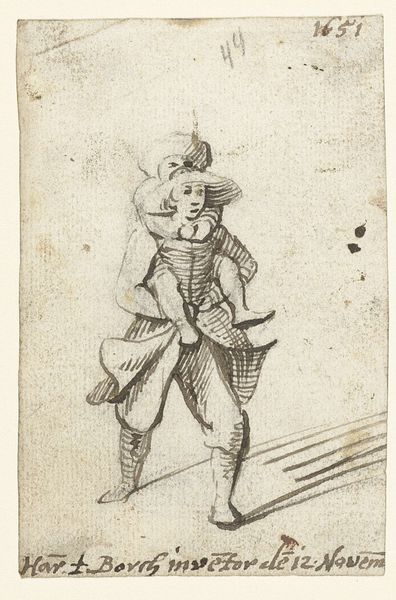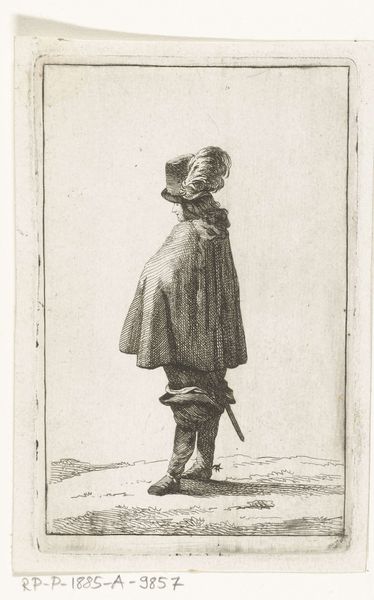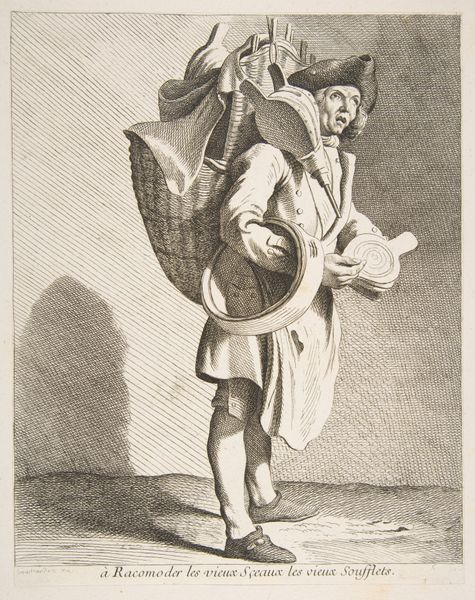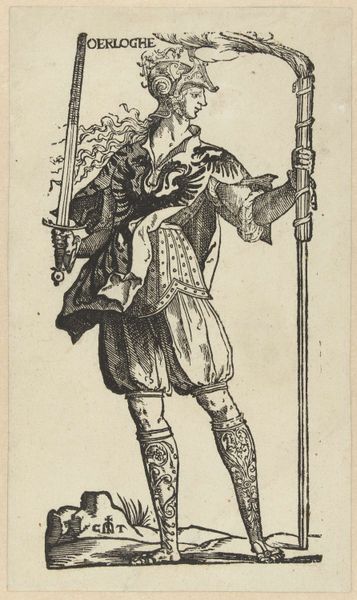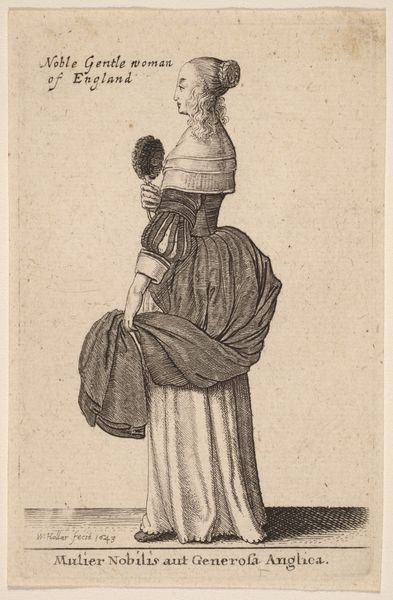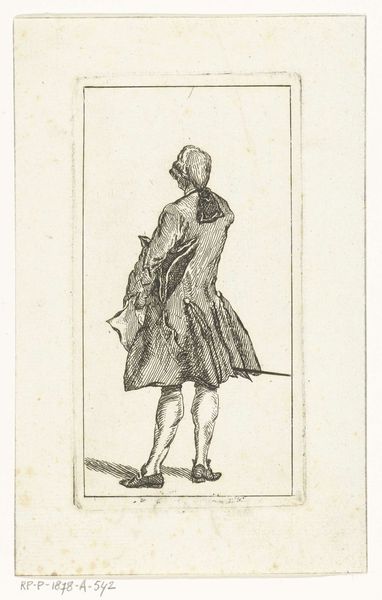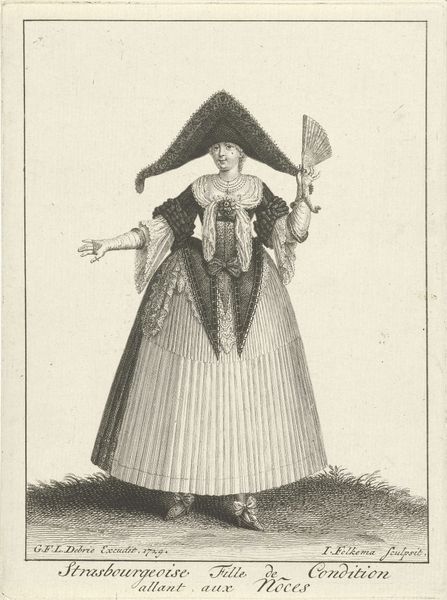
print, engraving
#
portrait
#
baroque
# print
#
figuration
#
portrait reference
#
line
#
portrait drawing
#
engraving
Dimensions: height 140 mm, width 78 mm
Copyright: Rijks Museum: Open Domain
Editor: This engraving, "Standing Man Bowing," was created sometime between 1627 and 1636 by Wenceslaus Hollar. It's at the Rijksmuseum, which feels appropriate. The detail is astounding for such a small piece, and the man's clothing tells a story. What kind of story do you think it tells, especially considering its place in a museum setting? Curator: The Rijksmuseum’s context is crucial here. Consider how Hollar's portrayal of this man, likely a member of the privileged class given his attire, reflects broader social hierarchies. Notice the fine details of his clothing – the lace collar, the decorated boots, even the sword. How does this level of detail affect your understanding of his social standing and the message Hollar might be conveying? Editor: It definitely highlights the subject's wealth and status. I guess I just hadn't thought about how the museum itself reinforces that, by preserving and showcasing *this* particular individual and lifestyle. Is Hollar commenting on that at all, do you think? Curator: That's a key question. Is he simply documenting the fashion of the time, or is there a subtle critique of the social order embedded in the very act of memorializing this man? Consider the power dynamics inherent in portraiture itself – who gets remembered, and why? Hollar worked for wealthy patrons. Does that limit our perception? Editor: So, even though it seems like a simple portrait, it actually opens up a conversation about power, social class, and the role of museums in shaping our understanding of the past. I hadn't thought about it that way. Curator: Precisely. It reminds us that art never exists in a vacuum. Analyzing it involves understanding the socio-political landscape in which it was created, displayed, and ultimately, preserved.
Comments
No comments
Be the first to comment and join the conversation on the ultimate creative platform.
